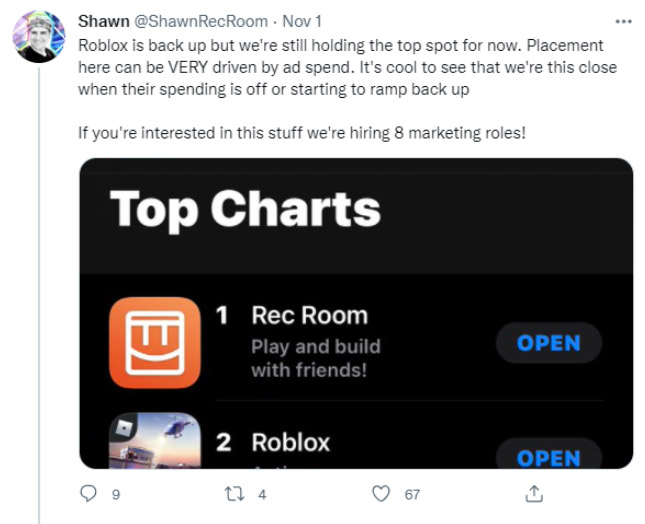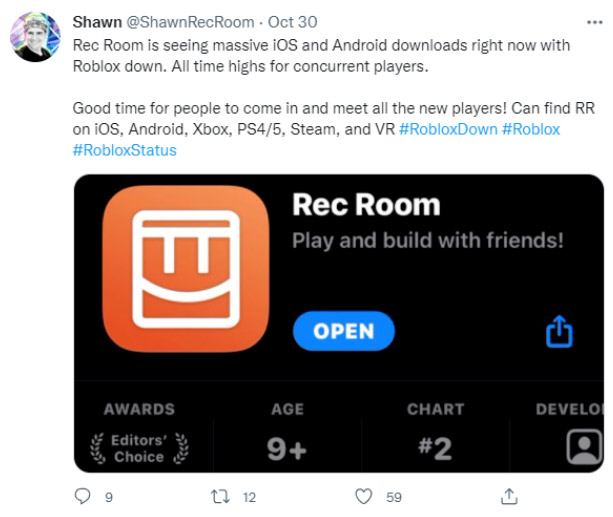VR and the metaverse is a gateway toward unparalleled engagement with your users and creating a more impactful product in the future. Taking steps towards meeting your users in an immersive environment can be easier than you think, and the windfall can bring benefits across platforms. Read on to learn how you can prepare your business for the spatial Internet.
Bringing your business or brand to the metaverse is about exploring a future that promises to be more immersive, connecting us to a digital reality in ways that are more natural to us.
The truth is that the metaverse is still coming together, full of social 3D worlds spread out across different technologies. So how can a business take part of this immersion while the technology is still sorting itself out across so many different properties?
Some of today’s biggest players include huge game brands like Fortnite and Roblox. While others are building crypto worlds in places like Decentraland and The Sandbox. And still others are playing inside of VR-first social worlds, like Rec Room, Horizon Worlds, and VR Chat.
At Kluge we are betting big on the promises of the metaverse. We believe in the unparalleled engagement possible when you build immersive 3D environments so much so that we are now committed to taking a VR-first approach in everything we do.
Imagining a more immersive experience for your users requires VR-first thinking
If you are excited to take your brand into the future, regardless of whether that’s with Kluge, we’d argue that you should think about exploring the metaverse by first prioritizing your VR experience, which is your most immersive experience.
If a big promise of the metaverse is about creating a deeper and more immersive engagement with your user, there is no better place for this than in VR.
First, let me be clear, VR is not the metaverse, it is a big part of it because the metaverse is about the spatial Internet, a 3D approach to interacting with the digital world. VR is rather its most mature and maximized expression.
So building VR-first is about thinking of your 3D spatial real estate first and foremost by thinking of the user who can take advantage of it the most; those with a headset on and controllers in their hands.
While this may not be the most common use case possible, that’s not the point; it is the richest and most immersive one. It is where users can be most present in a 3D world, able to literally “look around” them, inside of a world where they can feel “presence” as they touch, grab, and pull objects around their environment, and literally immerse themselves with other people via 3D avatars.
Being VR-first does not mean VR-only. I can think of no better way to illustrate how VR-first is done right than by looking at Rec Room.
Rec Room and the benefits of a VR-first approach
Rec Room is a social experience full of mini-games and social worlds, not unlike Roblox, where users can come hang out and play games either created by Rec Room or by literally millions of users inside the platform itself. Rec Room started exclusively in VR, and has since moved on to mobile devices, PCs, and console platforms like Xbox and Playstation.
It has experienced incredible growth across all platforms. And it continues to stay true to its VR-first approach, engaging over a million users a month in VR headsets alone.
Users can seamlessly use Rec Room in the same way across multiple platforms, moving from your VR headset towards using it on your phone while on the go with barely any friction.
This also allows players to play with friends who don’t have a VR headset and share experiences together. Yet it is only in VR where Rec Room really gets to shine in all of its glory. While you can crouch by pushing a button on your Rec Room mobile app, in VR you are physically crouching yourself. While you can move seamlessly using the joystick on console, in VR you are literally just moving your head around the environment, and spatially hearing steps behind you. These subtle differences become incredibly handy as you are playing an intense round of paintball, one of their most popular games. And they make the experience just so much better and more engaging. When in social VR, you literally feel like you are playing with others in the same room and place.
So, in building for VR-first, you are consistently prioritizing the most impactful way to engage with your users. And as the metaverse matures, you’ll be in a better position than your peers to really exploit the benefits of the spatial Internet.
On November 1st of last year, Roblox crashed temporarily. In the span of that down time, Rec Room took Roblox’s place as the #1 downloaded game for mobile devices. Even more impressive, they maintained this gain even after Roblox came back online.


Since then, in that short span of time, Rec Room’s private valuation has nearly tripled from $1.25 billion to $3.5 billion. And it’s now consistently one of the most downloaded games on the App Store.
Rec Room may still be a lot smaller than Roblox, but while Roblox has yet to take the leap towards VR, opting instead to build out its 3D universe inside of flat screens such as your computer or your game console, Rec Room has already come to all of the places that Roblox started on.
With easier to use creator tools that started by taking advantage of the immersiveness of VR, Rec Room is promising to be a strong contender to Roblox. By thinking first of the richness of VR rather than in trying to reach Roblox’s user numbers, Rec Room has created a formidable alternative to Roblox that is unlike what anyone else is doing out there.
The barrier to entry is lower than you think
If you want to be involved in a VR-first experience like Rec Room, all you have to do is use their world creation tools to build out your very own branded Rec Room world.
Rather than having to build a VR app from scratch, you can simply get started by using the world creation tools of VR-first apps such as Rec Room, VR Chat, Horizon Worlds, Mozilla’s Hubs, or even Microsoft’s Altspace. Heck, we even take meetings in our own rhythm game, Synth Riders, which has its own multiplayer space where up to 10 avatars can be together and socialize prior to starting the gameplay itself.
By participating in VR-first spatial experiences, you are truly maximizing your own understanding of the metaverse and where it’s going.
So if you are looking to dip the toes of your business into the metaverse, our first recommendation is to get a headset and place yourself at the center of the spatial Internet’s most immersive, natural, and mature space yet available: experience it in VR first.
Want to talk more about bringing your business into the metaverse? Let’s talk.